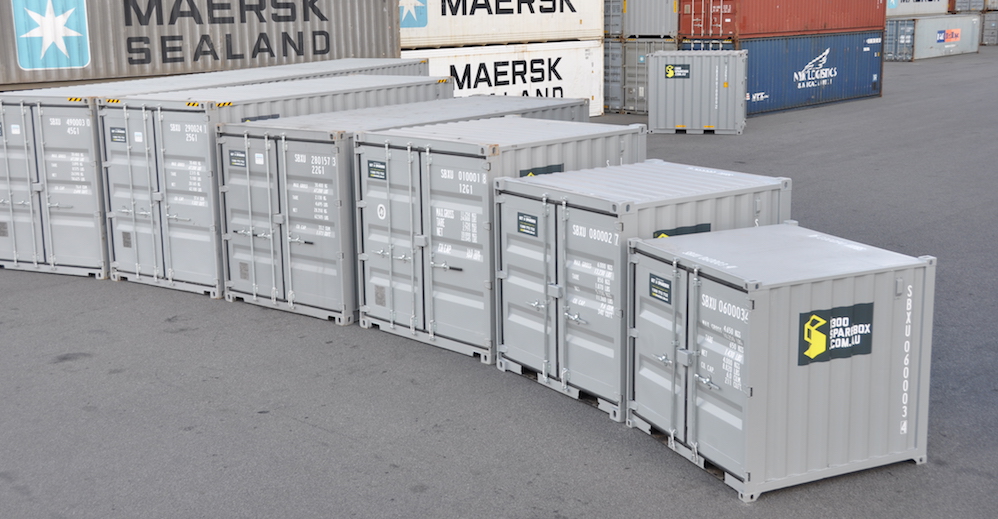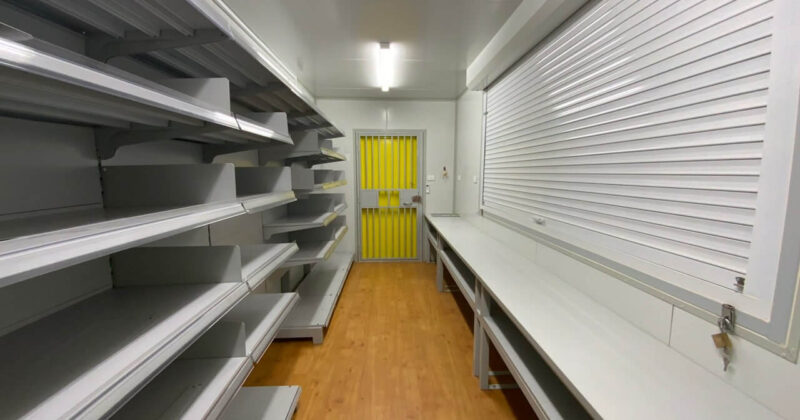Building a shipping container home is the ultimate ‘upcycled’ project. These basic metal boxes, that spend months at sea, can be turned into exciting and architecturally distinct homes. Whether you plan to create an off grid tiny house, or an industrial style house with large windows and open spaces, container homes can meet your needs and budget.
In this article, we’ll show you how to build your shipping container home. We show you the ten steps that you need to take to turn a shipping container into a comfortable and livable home.
1. Budget
2. Permits
3. Design
4. Buy Shipping Containers
5. Builders and Sub Contractors
6. Site Preparation
7. Lay the Foundation
8. Modifications and Structural Considerations
9. Windows, doors, roof and ventilation
10. Fixtures and fittings
1. Determine Your Budget
Before you design your shipping container house, you should set a realistic budget for your project. Although container homes are often more affordable than traditional homes, it will depend on the size, location, design and bespoke features that you want.
Research ballpark figures for costs such as the following:
- Structural and civil engineering.
- Architects, builders and contractors.
- Permits, fees and compliance.
- Shipping containers and building materials.
You will need to allow at least 20% for a contingency fund. This fund is a reserve of money that will be used to meet unexpected expenses during construction.
2. Sort out permits, planning and compliance
Contact your local council and get the information you need about building codes, standards, zoning restrictions and other limitations that will impact your build.
Work with an architect who has experience with bespoke shipping container homes. You need to submit your plans to your local council, and this may be a time consuming process, depending on the complexity of your design.
3. Design your Shipping Container Home
In our previous article, we shared tips on designing your shipping container home, including ideas for configurations and layout, positioning, orientation and container sizes.
4. Buy your shipping containers
After your designs and plans have been council approved and you are ready to build, you will need to buy your shipping containers. The appeal of shipping containers is that they have standard sizes, which interlock with each other.
Container sizes

The standard container sizes include:
- 20 FT
- 40FT
1300SPAREBOX has high cube containers that give you an extra 30cm headspace. This extra space can provide higher ceilings or a subfloor.
New or secondhand?
Decide if you want new or secondhand containers. To save money on your build, choose a shipping container company that can arrange the modifications you need – before they leave the factory.
Buy good quality shipping containers without rust or weak spots. Check out our article on Top Tips for Buying a Shipping Container. Your containers should be:
- Wind and watertight.
- Good quality doors and hinges.
- Rust free with a strong roof.
- Have Australia wide delivery.
5. Builders and Sub Contractors
Will you build your house yourself? If you have the practical experience, time and an owner builder license, then this can be a rewarding and cost effective option.
Most new house builds will need builders, contractors, plumbers, gas fitters, electricians and painters, to name a few. Choose qualified tradespeople who have a good reputation and don’t forget to ask for references. Shop around and compare quotes, to ensure that you get the best deals.
6. Site Preparation
Your building site will need to be prepared for construction. This process can be costly, depending on the amount of grading and excavation required. Building on a flat area will be the cheapest option. At this stage, you need to consider:
- Storm water drains, sewerage and plumbing.
- Installation of the septic system.
- Utilities including electricity and gas lines.
7. Foundation
Decide on the foundation that will give you a structurally sound dwelling. Consult a qualified builder or engineer to discuss the soil type, water level, sanitation and drainage requirements, local bylaws and the number of containers, and weight that will be on your lot.
A concrete slab is one of the most popular options as it is affordable and strong enough for a house build. The containers are welded with steel reinforcements. Other options include concrete piers and concrete strip foundations.
8. Modifications and Structural Considerations
Shipping containers have an integrated structural system where the corrugation panels – sides, roof and back – frame, front doors and floor form a strong structure. In their intact state, they are strong and carry loads that exceed typical home construction.
When you modify your containers, including cutting holes, the structure will be compromised and weakened. For example, if you remove the corrugated panelling along the length of one side, the structure may fail structurally. Any modifications will need to be reviewed by a structural engineer or architect.
9. Windows, doors, roof and ventilation
Install glass windows, doors, insulation, skylights, roof and ventilation. Windows and doors should be reinforced to keep the structural integrity of your containers.
- Although a shipping container has its own roof, it loses its structural integrity when you join the containers together. A traditional roof will give better structural integrity and drainage.
- Insulation and ventilation are vital as containers are ‘metal boxes’ which get extremely hot. A closed cell foam layer on the inside and outside walls of your house will stop moisture from leaking in and prevent it from getting too hot or cold.
- When the windows are doors are cut, some of the anti-corrosive paint will be removed. You may need to retreat it.
- Ensure that you seal any gaps to protect your house from the elements.
10. Fixtures and fittings
It’s time for electrical wiring, gas and plumbing. Plasterboard or drywalls will be installed, and the interior of your home will be painted. Install the kitchen and bathrooms.
Shipping containers come with plywood flooring. This flooring should be replaced with wooden floorboards or tiles, as plywood is treated with pesticides during sea transportation. High cube containers give you more room to add a subfloor.
Buy a shipping container in Melbourne, Brisbane or Adelaide. 1300 SPAREBOX delivers nationwide. Get in touch, and we can help you create a home that is comfortable, functional and unique. Start your project today!










